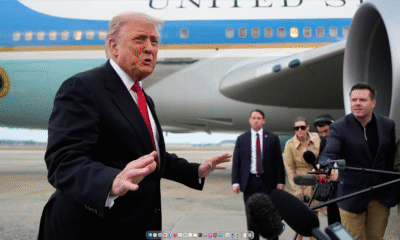Business
RBI slows pace of interest rate hikes but hints at more to come
The Reserve Bank of India slowed the pace of interest-rate increases for the second straight time when it on Wednesday expectedly increased borrowing cost by 25 basis points but hinted more to come as core inflation remained high.
The RBI’s six-member Monetary Policy Committee voted 4-2 to raise the benchmark repurchase or repo rate to 6.50 per cent and retain its stance of withdrawing accommodation, which was adopted early last year. This is the sixth straight increase in interest rates since May last year and the cumulative hike now totals 250 bps. The RBI raised interest rates by 35 bps in December 2022. Rates were hiked by 40 bps in May and 50 basis points hike each in June, August and September.
Also read: PayU’s LazyPay, IndiaBulls Home Loans, Kissht among websites blocked by govt
“The stickiness of core or underlying inflation is a matter of concern. We need to see a decisive moderation in inflation. We have to remain unwavering in our commitment to bring down CPI headline inflation,” RBI Governor Shaktikanta Das said while announcing the committee’s decision. Adjusted for inflation, the policy rate still trails its pre-pandemic levels, Das said, adding liquidity remains in surplus. The consumer price inflation (CPI) forecast was lowered to 6.5 per cent for the current fiscal from 6.7 per cent.
While inflation is expected to moderate in 2023-24, it is likely to rule above the 4 per cent target. The retail inflation rate eased to 5.72 per cent in December from 5.88 per cent in the previous month, falling below the RBI’s upper tolerance band of 2-6 per cent for a second straight month, though core inflation, which excludes more volatile food and fuel prices, was still running at 6.1 per cent. “Going ahead, the food inflation outlook will benefit from a likely bumper rabi harvest led by wheat and oilseeds,” Das said. The RBI projected GDP growth of 6.4 per cent in the fiscal year starting April 1 (2023-24), down from 7 per cent in the current year, with Das saying the Indian economy remains resilient in the face of considerable uncertainties on global commodity prices.
“The global economic outlook does not look as grim now as it did a few months ago. Growth prospects in major economies have improved, while inflation is on a descent though still remains well above target in major economies. The situation remains fluid and uncertain,” he said. “Commodity prices may remain firm with the easing of COVID-19 related restrictions in some parts of the world.” Among the measures announced on Wednesday was allowing lending and borrowing of government securities or G-secs with a view to “provide investors with an avenue to deploy their idle securities, enhance portfolio returns and facilitate wider participation”.
“This measure will also add depth and liquidity to the G-sec market; aid efficient price discovery; and work towards a smooth completion of the market borrowing programme of the centre and states,” Das said. The RBI also restored market hours for the Government Securities market to the pre-pandemic timing of 9 am to 5 pm. On the rupee, Das said it has remained one of the least volatile currencies among its Asian peers. The depreciation and the volatility of the Indian rupee during the current phase of multiple shocks is far lower than during the global financial crisis and the taper tantrum.
In a fundamental sense, the movements of the rupee reflect the resilience of the Indian economy, he said. The current account deficit (CAD), which stood at 3.3 per cent in the first half of 2022-23, is expected to moderate in the second half and “remain eminently manageable and within the parameters of viability”. Das also said draft guidelines for the levy of penal interest on advances will be issued for comments. With UPI becoming hugely popular for retail digital payments in India, the RBI has proposed to permit all inbound travellers to India to use UPI for their merchant payments (P2M) while they are in the country. “To begin with, this facility will be extended to travellers from G-20 countries arriving at select international airports,” he said.
The RBI will also launch a pilot project on QR Code-based Coin Vending Machines (QCVM) in 12 cities. These vending machines will dispense coins against debit to the customer’s account using UPI instead of physical tendering of banknotes. This will enhance the ease of accessibility to coins.









































Pingback: PhonePe launches UPI international service for its users for payments in 5 countries
Pingback: Amid Adani Group developments, RBI chief says Indian banking system stronger, larger to be impacted by 'case like this'